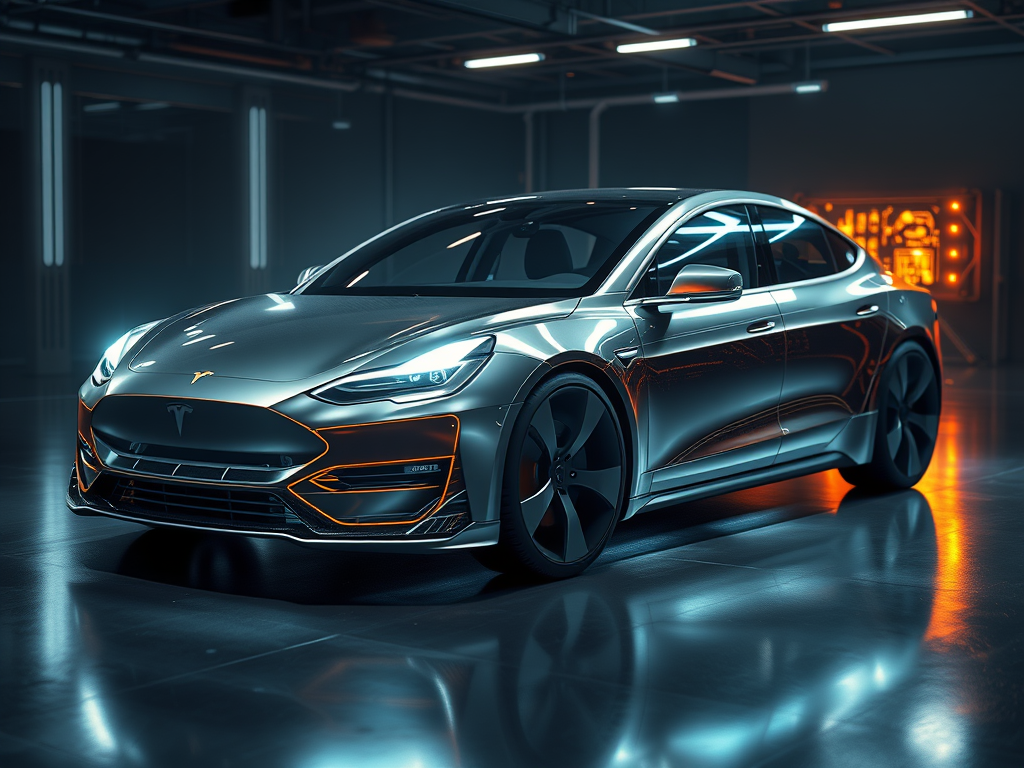Tesla’s pursuit of full self-driving (FSD) capability has led to the creation of Dojo, a custom-built supercomputer that stands as a testament to the company’s ambition and its commitment to vertical integration. Dojo isn’t merely an incremental upgrade; it represents a fundamental shift in how Tesla approaches AI development, offering the potential to unlock unprecedented levels of autonomous driving and propel the company beyond the automotive sector.
The Autonomous Imperative: Why Tesla needs Dojo
Tesla’s vision of a fully autonomous future hinges on the ability to train increasingly complex neural networks. Unlike competitors who rely on a combination of sensors like lidar, radar, and cameras, Tesla has doubled down on a vision-only approach, using cameras as the primary source of information about the vehicle’s surroundings. This approach, while potentially more scalable and cost-effective in the long run, places immense demands on the AI system, requiring it to interpret and understand the visual world with human-level accuracy and reliability.
The Challenges of Vision-Based Autonomy:
- Data Overload: Processing the input from eight cameras simultaneously generates a massive stream of data that needs to be analyzed in real-time.
- Complex Scenarios: Autonomous vehicles must be able to handle a vast array of driving scenarios, from navigating busy city streets to dealing with unexpected obstacles and adverse weather conditions.
- Edge Cases: “Edge cases,” or rare and unusual events, pose a particular challenge for AI systems. These situations require the system to make quick decisions based on limited information.
- Safety Criticality: The consequences of errors in autonomous driving can be severe, making safety paramount. The system must be able to operate with a level of reliability that far exceeds that of human drivers.
To meet these challenges, Tesla needs to train its neural networks on vast amounts of real-world driving data. Tesla’s fleet of vehicles is constantly collecting data, logging billions of miles each month. This data is then used to refine and improve the AI algorithms that power FSD. However, the sheer scale of the data and the complexity of the required computations necessitate a supercomputing infrastructure far beyond the capabilities of traditional systems. This is where Dojo steps in, offering a solution tailored to Tesla’s specific needs.
Unveiling the Architecture: A look inside Dojo
Dojo is not just a collection of off-the-shelf components; it’s a custom-engineered machine designed from the ground up to accelerate AI training. The fundamental building block of Dojo is the D1 chip, a custom-designed processor optimized for machine learning workloads.
The D1 Chip: Tesla’s AI Workhorse:
- In-House Design: The D1 chip was designed in-house by Tesla engineers, led by Ganesh Venkataramanan, with a focus on maximizing computational performance and minimizing bottlenecks.
- Manufacturing Process: The D1 is manufactured by TSMC using a 7nm process.
- Specifications: The chip features 50 billion transistors and a large die size of 645 mm². Each D1 chip contains 354 computing cores. Each of these nodes has one teraflop (1,024 gflops) of compute. The entire chip is capable of up to 363 teraflops of compute as well as 10tbps of on-chip bandwidth and 4tbps of off-chip bandwidth.
- Optimization: According to Venkataramanan, the D1 chip is a “pure machine learning machine” with no legacy support or unnecessary components. It is designed to provide GPU-level compute with CPU-level flexibility and high I/O bandwidth.
Training Tiles: Building Blocks of the Supercomputer:
- Composition: To create a functional module, Tesla combines 25 D1 chips into a “training tile”.
- Performance: Each tile delivers 9 PFlops of compute and 36 TB/s of bandwidth. Each tile also has 11 GB of SRAM memory.
- Integration: The training tile integrates all necessary hardware for power, cooling, and data transfer, functioning as a self-contained computer system.
- Power Consumption: Each tile consumes 15 kilowatts.
ExaPOD: Scaling Up the Compute Power:
- Scalability: Tesla scales Dojo by deploying multiple ExaPODs.
- Architecture: Each ExaPOD consists of 10 cabinets, with each cabinet housing two trays of six training tiles.
- Compute Power: An ExaPOD contains 120 tiles, 3,000 D1 chips, and over one million cores, delivering 1.1 exaflops of AI compute.
This architecture allows Tesla to achieve massive parallelism and high bandwidth, enabling faster training of its neural networks and accelerating the development of FSD.
Cortex: Complementing Dojo’s Capabilities
While Dojo has garnered significant attention, Tesla is also developing another AI training supercluster called Cortex. Located at Tesla’s headquarters in Austin, Cortex is designed to solve real-world AI challenges and support the development of both FSD and the Optimus humanoid robot.
Cortex boasts impressive specifications, including a video storage capacity of 120 petabytes. In late 2024, Musk stated it had twice the training capacity of the initial Dojo. The relationship between Dojo and Cortex remains somewhat unclear, but they appear to be complementary systems, both contributing to Tesla’s overall AI capabilities. Some analysts believe Cortex to be Dojo’s second generation.
The Strategic Implications of Dojo: More than just a Supercomputer
Dojo represents a significant strategic investment by Tesla, aimed at achieving unparalleled AI capabilities and solidifying its position as a leader in both the automotive and artificial intelligence industries.
Vertical Integration and Control:
Dojo exemplifies Tesla’s strategy of vertical integration, where the company designs and manufactures its own key components. This approach allows Tesla to optimize its hardware and software for specific tasks, leading to improved performance and efficiency. By controlling the entire AI development pipeline, from chip design to software deployment, Tesla can reduce its reliance on third-party vendors and gain a competitive advantage.
Data Advantage and Accelerated Learning:
Tesla’s vast fleet of vehicles provides it with a unique data advantage. By training its neural networks on real-world driving data, Tesla can develop more robust and reliable autonomous driving systems. Dojo enables Tesla to process this data at scale, accelerating the development of FSD and allowing Tesla to iterate more quickly on its AI algorithms.
Beyond Automotive: Expanding into New Markets:
While Dojo is primarily focused on autonomous driving, its capabilities extend to other areas, such as robotics, energy, and cloud computing. Musk has suggested that Dojo could be used to train the AI for Tesla’s Optimus robot, enabling it to perform a wide range of tasks in manufacturing, logistics, and even domestic settings. Furthermore, Tesla may eventually offer Dojo as a cloud-based service to other companies, providing them with access to its powerful AI infrastructure. This could potentially disrupt the cloud computing market and generate new revenue streams for Tesla.
Reducing Reliance on Nvidia:
Developing Dojo also reduces Tesla’s reliance on Nvidia for AI compute power. Musk has stated that Tesla spends billions of dollars each year on Nvidia hardware and that Dojo will eventually reduce that number. This could free up capital and improve Tesla’s profit margins.
Challenges and Roadblocks: Navigating the Path to Success
Despite its potential, Dojo faces several challenges that Tesla must overcome.
Technical Hurdles and Complexity:
Building and operating a supercomputer like Dojo is a complex undertaking. Tesla must overcome technical hurdles related to chip design, system integration, and software development. Ensuring that all the components work together seamlessly and efficiently requires a high level of expertise and careful engineering.
Economic Investment and ROI:
The development and deployment of Dojo require significant investment. Tesla must carefully manage its resources and ensure that Dojo delivers a return on investment. The cost of building and operating Dojo could be substantial, and Tesla needs to demonstrate that the benefits of the system outweigh the expenses.
Competition and the Evolving AI Landscape:
Tesla faces competition from other companies in the AI and autonomous driving space. Companies like Waymo, Nvidia, and Google are also investing heavily in AI infrastructure and talent. To maintain its lead, Tesla must continue to innovate and push the boundaries of AI technology.
Ethical Considerations and Societal Impact:
The development of autonomous driving technology raises ethical concerns related to safety, liability, and data privacy. Tesla must address these concerns and ensure that its technology is used responsibly. The company needs to develop robust safety protocols, establish clear lines of liability, and protect the privacy of its users.
The Road Ahead: Dojo and the Future of Tesla
Dojo represents a bold bet by Elon Musk and Tesla. If successful, Dojo could revolutionize the automotive industry and transform Tesla into an AI powerhouse. However, the path to full autonomy is fraught with challenges, and Tesla must overcome significant technical, economic, and ethical hurdles to achieve its vision.
As Tesla continues to develop Dojo and expand its AI capabilities, the world will be watching closely to see if this ambitious project can deliver on its promise. The company’s progress in autonomous driving, robotics, and other AI-related fields will depend, in part, on the success of Dojo.
Key Milestones to Watch:
- Dojo’s Performance: Tracking the performance of Dojo over time will be crucial. As Tesla adds more ExaPODs and refines its AI algorithms, it should see a steady improvement in the performance of its autonomous driving systems.
- FSD Adoption and Safety: Monitoring the adoption rate of FSD and its safety record is essential. If Tesla can demonstrate that FSD is safer than human driving, it will likely see increased adoption and greater public acceptance.
- Expansion into New Markets: Tesla’s success in expanding its AI capabilities into new markets, such as robotics and energy, will be a key indicator of its long-term potential.
- Competition: Closely watching competitors like Waymo, Nvidia, and Google will be crucial for Tesla.
Only time will tell if Dojo will enable Tesla to achieve full self-driving and reshape the future of transportation. The journey is likely to be long and challenging, but the potential rewards are enormous.


Leave a Reply